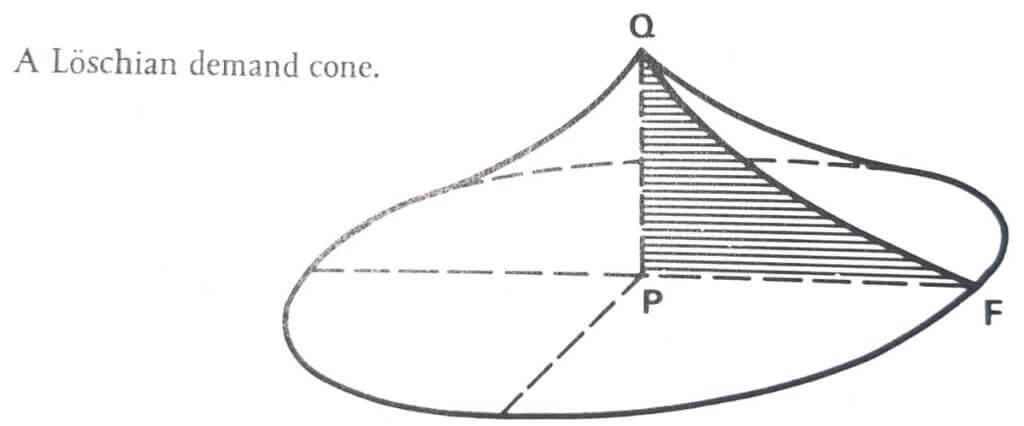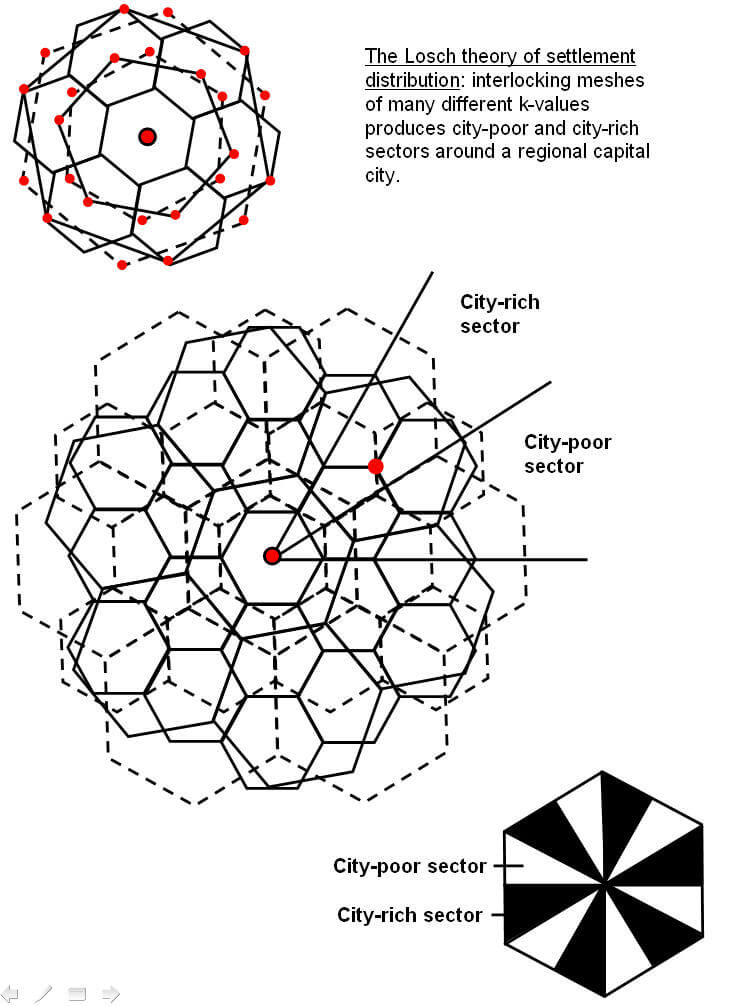August Lösch’s Theory of Profit Maximisation or a demand theory rejects the spatial variation of cost and held them constant and suggested optimum location on the basis of the largest monopolised market. Contrarily Weber’s Theory focuses too much on production cost and assumes supply is constant. We can say that Lösch’s Theory is rather a supply theory and August Lösch gave a theory of profit maximisation or a demand theory.
Maximum Profit
not the Least Cost
August Losch was a German Economist and gave his theory in 1939 in the book ‘Dei taumliches Ordnung Derwirt’s Chaff’. The translation of this book was published in 1954 as ‘Economics of Location’.
Losch’s theory is famous not only in locational economy but also in urban geography because of the similar hexagonal spatial pattern used by Walter Christaller in central place theory. August Losch’s theory of Profit Maximisation is in fact a modification of the Central Place Theory and Weber’s theory.
Assumptions of the theory
- Isotropic surface
- Constant supply of goods or services
- Each firm tries to locate on the most profitable location
- Evenly dispersed buyers with identical demands
- Demand decreases with an increase in price
- The concept of economic men exists i.e. entrepreneurs will try to maximise profits
The Löschian Demand Cone
August Losch’s theory of Profit Maximisation can be understood by answering a basic question.
Question- What area will an industry serve?
Answer- The most optimum location for an industry to serve is at maximum profit.
In Fig. 1, P represents the manufacturing industry. Manufacturing of a certain product takes place at this point. A maximum of this product will be sold here while no product will be sold at point F.
When we move from P to point F the price of the product will increase because of the cost of moving it away from P.

QF represents the spatial demand curve of a product and PF the distance supplied. When we rotate this curve 360° we get the demand cone.
The demand cone is the area served by industry P.

Why hexagonal and circular market areas?
Since circles either leave unserved areas or overlap, a hexagonal shape better solves the purpose and is more practical.
Löschian economic landscape

Losch took the hexagonal structure from Christaller but not the K3, K4 & K7 principles. He called these principles just some special cases and said that each product serves a different size area and used K values 3, 4, 7, 9, 12, 13, 19, and up to 150 for different products. He superimposed different-sized hinterlands around each settlement for each product and arranged these hinterlands in a way that the greatest number of lowest-order settlements existed in the minimum of space. From this pattern emerged six settlement-rich sectors around a prominent central place and six settlement-poor sectors between them, where services were sparse Figure 2.